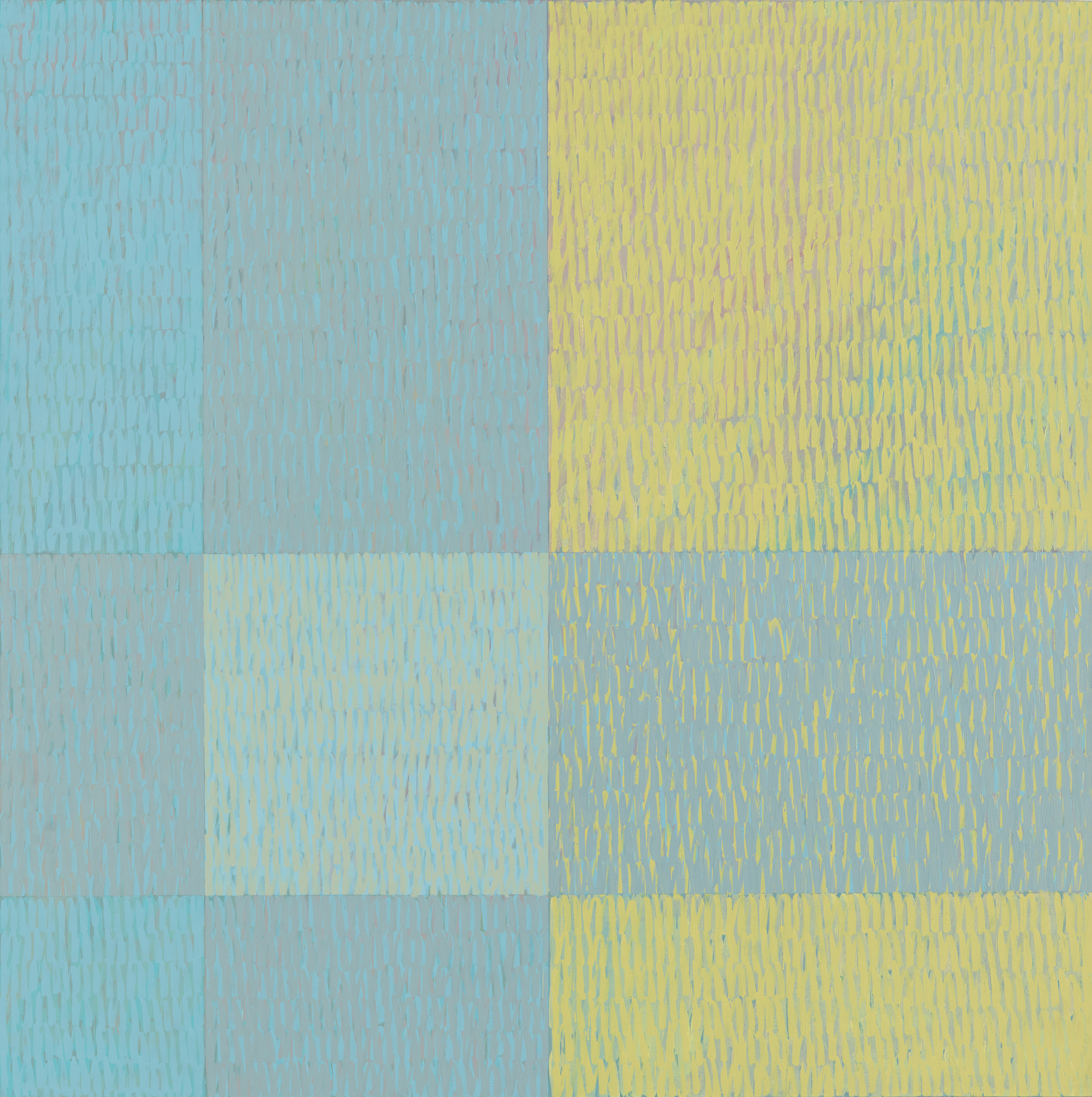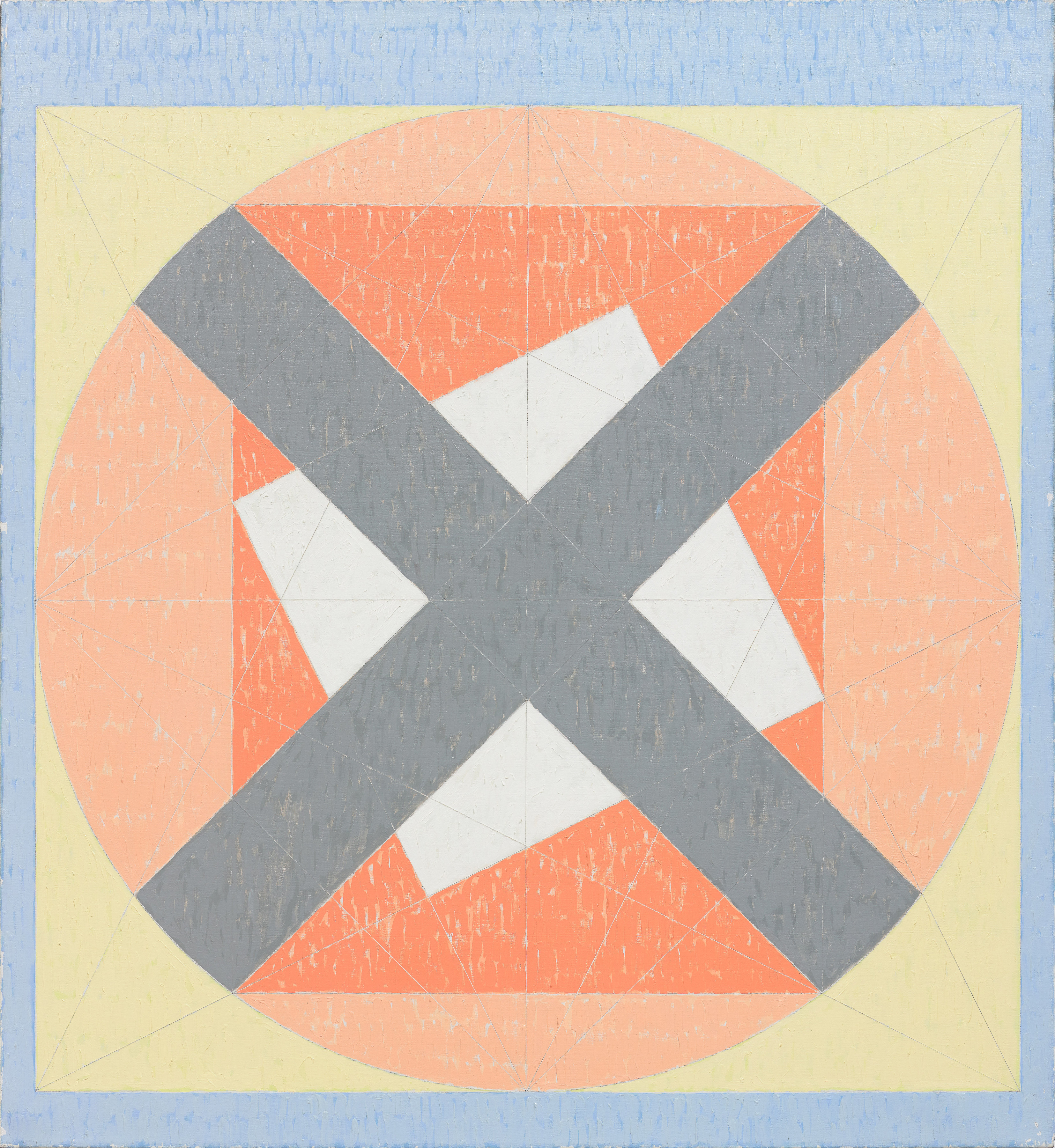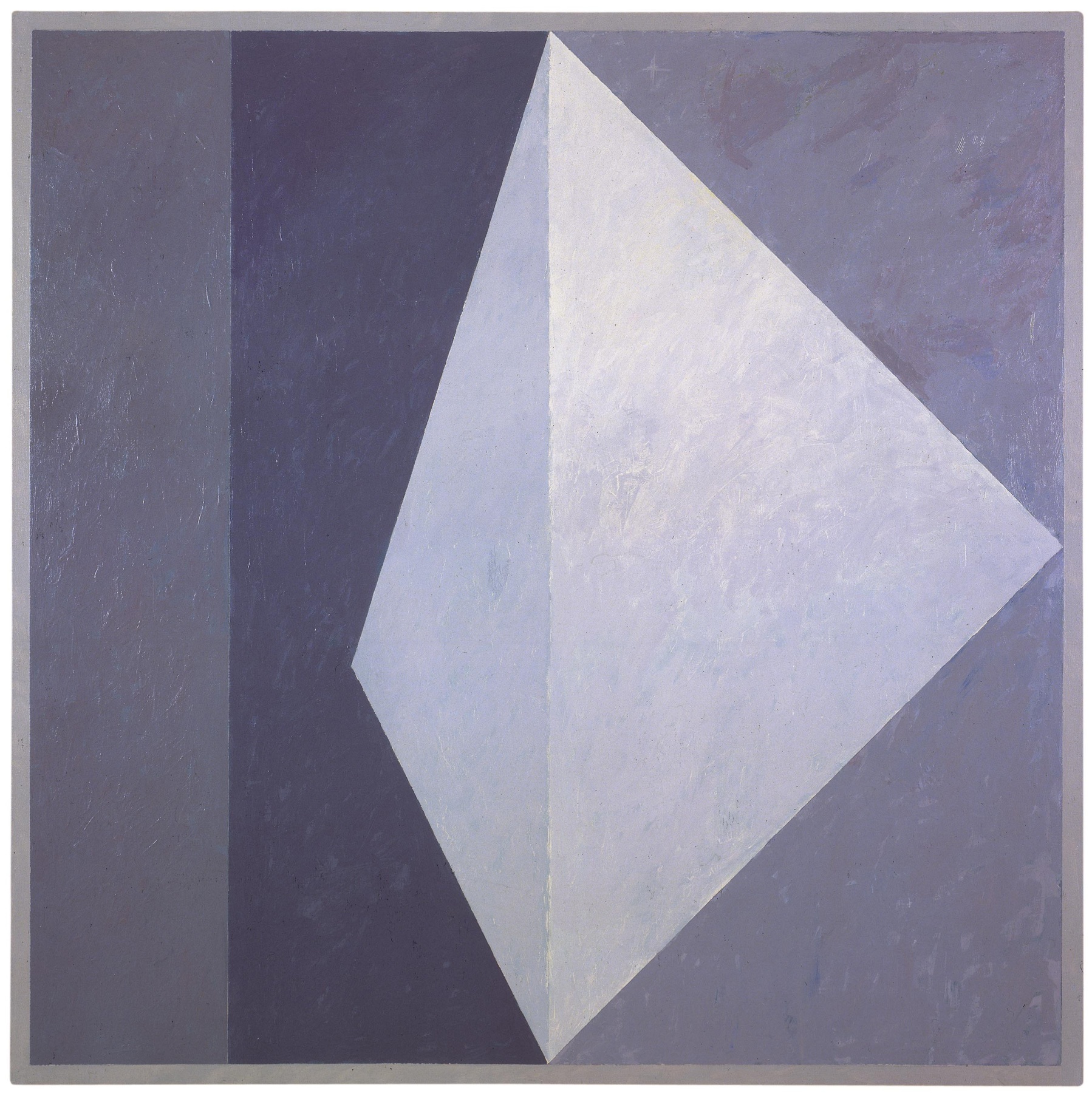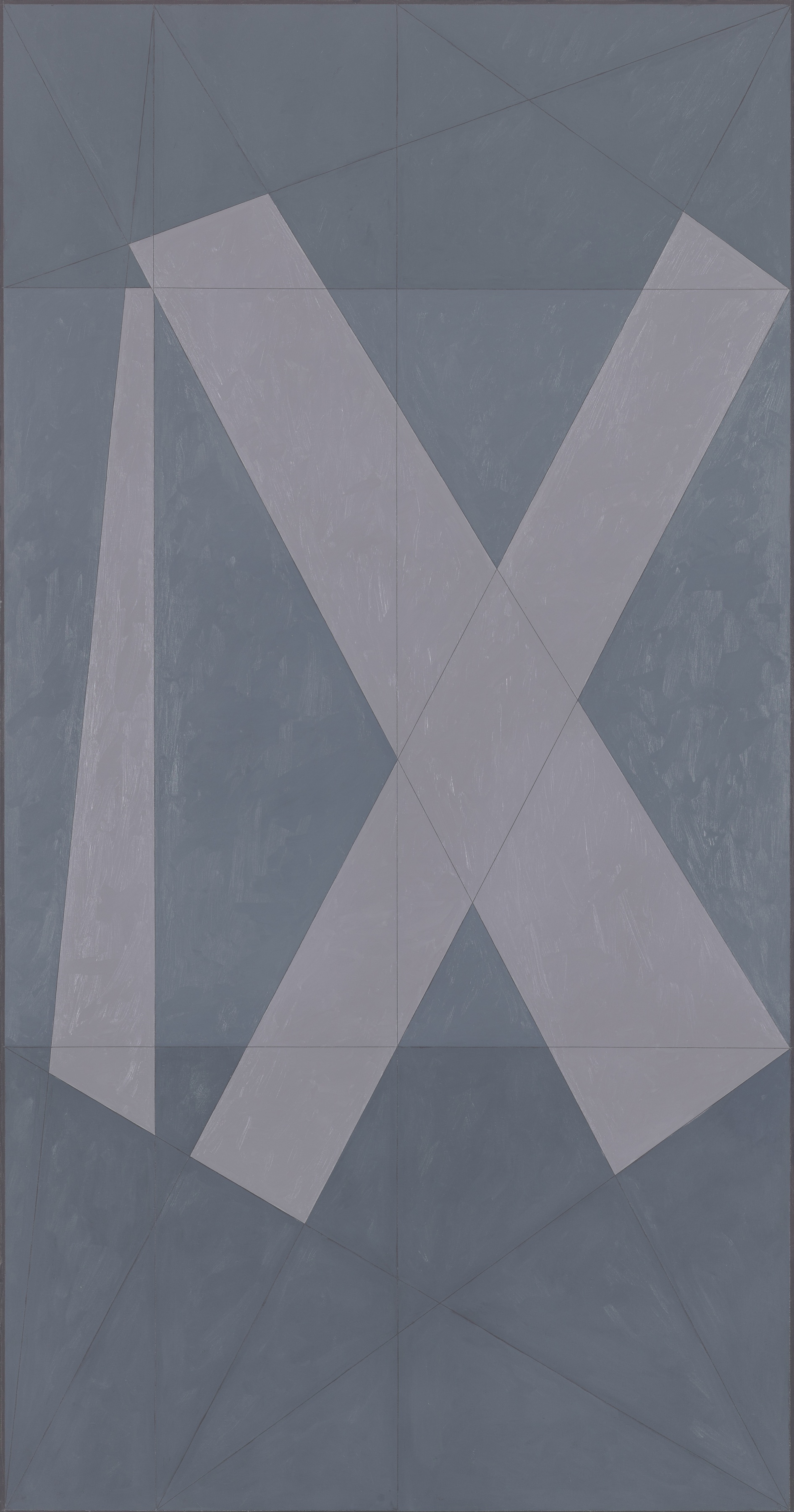Jack Tworkov
Paintings
Late work
Tworkov’s late work exemplifies the artist’s interest in limits and systems as a context for artistic intervention and accident. His experimentation over the previous five decades motivated him to continue exploring opportunities for evolution within his practice. As he explained in a 1979 interview, “beyond any actual description of what I do, I really have no theories about my work, except, as I say, it’s a constant search for me to find something in my own work... Now it seems strange that at my age I’m still involved in self-formation, but it’s true. I’m still in that position, where I look for self completion in the work I’m trying to do.”
The visually diverse paintings of this period show the range of possibilities for variation in Tworkov’s repeated diagonal compositions and carefully selected palette. He divided the canvas through the use of geometric structures derived from the Fibonacci sequence 3:5:8 to form a broad range of configurations. He multiplied the three-five-eight system as a structural unit and imposed those divisions onto variously sized square and rectangular surfaces. His use of predetermined proportions on each canvas allowed for a variety of images and spatial illusions to emerge from a framework of lines and connecting points placed along the perimeter of the pictorial surface which he then filled with his repeated singular brushstrokes.
Tworkov developed a new visual vocabulary in order to continuously investigate spatial possibilities as evident in the geometric paintings of his prolific last decade. These measured paintings show the logic of mathematics as the constant that Tworkov intentionally achieved in order to create an ever-evolving body of work.







